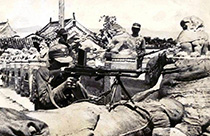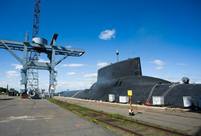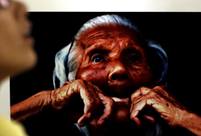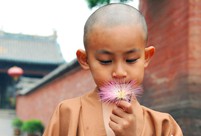

BEIJING, July 8 (Xinhua) -- After Fang Dazeng disappeared on the frontline of China's war of resistance against Japan in 1937, few remembered the 25-year-old amid the turmoil of war.
Now, eight decades later, Fang is set to take his place in history as one of China's greatest war correspondents, with his photos exhibited in National Museum of China since Tuesday, and a new book set to chart his pioneering place in Chinese photo journalism.
Fang was a freelancer who contributed to major newspapers of the time, including Shen Bao and Ta Kung Pao.
He made a name for himself when he left his home in Beiping (now Beijing) for the frozen wasteland of north China's Suiyuan Province (now Inner Mongolia Autonomous Region) on Dec. 5, 1936.
His task was reporting the Suiyuan battlefield.
He had set out to tell the Chinese people of developments in a distant battlefield where the then Kuomintang government was fighting incursions by the Japanese - and he returned as China's first war photo-correspondent.
Before the July 7 Incident of 1937, the official outbreak of the anti-Japan war, the battle in Suiyuan was a large-scale local war, but journalists - hindered by a lack of transmitting technology and poor transport - seldom went to the front.
"I hope to inform the readers clearly about what happens on the front-line," Fang wrote in his report.
Over the following 43 days, he took a series of historic images.
Yang Honglin, associate researcher of the National Museum of China, started collecting and researching Fang's work in 2009.
"His photos show Fang experienced the Beiping-Tianjin Campaign, the Baoding Campaign in north China's Hebei Province and the battle of Datong, in north China's Shanxi Province," says Yang.
But in October 1937, his dispatches from the front stopped. "He was reported as missing," Yang says.
Fang's mother kept many of his films in two wooden boxes in Beijing, his younger sister, Fang Chengmin, once recalled.
But the mother burned one box so the occupying Japanese army would not find it. "Most of Fang's photos were about the Kuomintang's resistance against the Japanese," Yang says.
The Kuomintang content prompted Fang's mother to give the other box to the Red Guards in the Cultural Revolution of 1966 to 1976.
After the Cultural Revolution, Fang Chengmin found the photos scattered on the floor of an office that had been occupied by the Red Guards. She took them home.
In the 1980s, a Taiwanese magazine published the photos, and in 2006, all 837 photos were donated to the National Museum of China in Beijing.
These photos had survived in good condition.
Fang focused on the people amid the "flames of war", Yang says: "His works concern old people, youths, soldiers, beggars, cities, villages...."
This year, the 70th anniversary of the victory of China's war against Japan, Yang will publish a book of Fang's precious photos, titled "Suiyuan, a lost photographer's record of China's war of resistance against Japan", on July 10.
Some of the photos lack captions because identifying the people is impossible.
"The soldiers did not know the photographer was recording their courage and sacrifice, while the photographer would not know his photos would be published half a century later," Chinese painter Chen Danqing says.
"Fang Dazeng was just one of the photographers recording the cruel war, and their names have been lost in time," says Yang.
"But we should not forget the legacy they left us."
 Campus belle in HK goes viral online
Campus belle in HK goes viral online Lugou Bridge in 78 years: July 7 incident
Lugou Bridge in 78 years: July 7 incident Get ready for the world's most thrilling water rides
Get ready for the world's most thrilling water rides Evolution of Chinese beauties in a century
Evolution of Chinese beauties in a century Creative graduation caps of ‘vigorous elves’
Creative graduation caps of ‘vigorous elves’ Typhoon class strategic Submarine in photos
Typhoon class strategic Submarine in photos Japan’s crimes committed against "comfort women"
Japan’s crimes committed against "comfort women" Legendary life of a bee-keeping master in Hainan
Legendary life of a bee-keeping master in Hainan 4-year-old cute 'monk' spends summer holiday in temple
4-year-old cute 'monk' spends summer holiday in temple Top 10 most competitive Chinese cities in Belt and Road Initiative
Top 10 most competitive Chinese cities in Belt and Road Initiative Top 10 travel destinations in the world
Top 10 travel destinations in the world Can China play a role in Greek debt crisis?
Can China play a role in Greek debt crisis?  Dogs in uniform: China’s combat canines
Dogs in uniform: China’s combat canines Cut for China
Cut for China Market reacts to govt support
Market reacts to govt support Day|Week